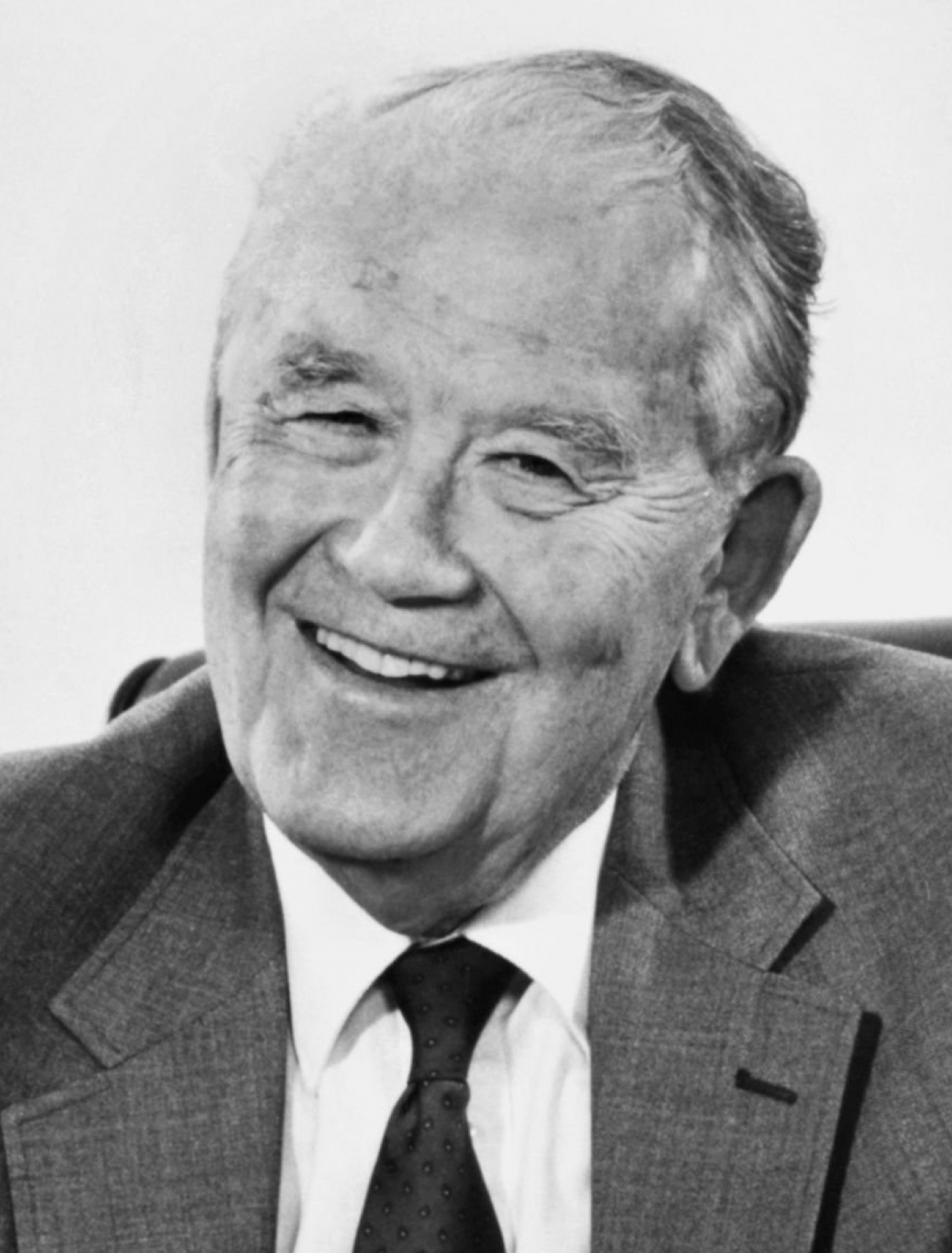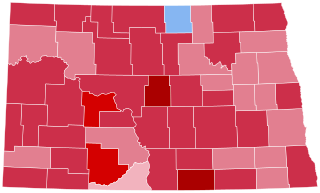
North Dakota's at-large congressional district is the sole congressional district for the state of North Dakota. Based on size, it is the eighth largest congressional district in the nation.

Quentin Northrup Burdick was an American lawyer and politician. A member of the North Dakota Democratic-NPL Party, he represented North Dakota in the U.S. House of Representatives (1959–1960) and the U.S. Senate (1960–1992). At the time of his death, he was the third longest-serving senator among current members of the Senate.

The 1976 U.S. Senate election for the state of North Dakota was held November 2, 1976. The incumbent, North Dakota Democratic NPL Party (Dem-NPL) Senator Quentin Burdick, sought and received re-election to his fourth term to the United States Senate, defeating Republican candidate Robert Stroup.

The 1970 United States Senate election in North Dakota was held November 3, 1970. The incumbent, North Dakota Democratic NPL Party Senator Quentin Burdick, was re-elected to his third term, defeating Republican candidate Thomas S. Kleppe, who later became the United States Secretary of the Interior.

The 1960 Special U.S. Senate election in North Dakota was held June 28, 1960, to fill the United States Senate seat vacated by the late William Langer. Langer died in office on November 8, 1959, and Clarence Norman Brunsdale, a former Governor of North Dakota, was temporarily appointed to the seat on November 19 of that year until the special election was held. North Dakota Democratic-NPL Party candidate Quentin N. Burdick faced Republican John E. Davis for election to the seat. Davis had been serving as Governor of the state since 1957.

The 2010 House election in North Dakota took place on November 2, 2010 to elect the state's at-large Representative to the United States House of Representatives. Representatives are elected for two-year terms; this election was for the 112th Congress from January 3, 2011 until January 3, 2013. North Dakota has one seat in the House, apportioned according to the 2000 United States Census.

A general election was held in the U.S. state of North Dakota on Tuesday, November 2, 2010, with primary elections being held on June 8, 2010.

The 2014 United States House of Representatives election in North Dakota was held on Tuesday, November 4, 2014, to elect the U.S. representative from North Dakota's at-large congressional district, who will represent the state of North Dakota in the 114th United States Congress. The election coincided with all other states' House of Representatives elections. Incumbent Republican representative Kevin Cramer, who has served in the seat since 2013, ran for re-election to a second two-year term in office. Cramer became the first Republican congressman to be re-elected in North Dakota since 1978.

The 2016 United States House of Representatives election in North Dakota was held on November 8, 2016, to elect the U.S. representative from North Dakota's at-large congressional district. The election coincided with the 2016 U.S. presidential election, the North Dakota Governor election, U.S. Senate election, as well as other statewide, legislative, and local elections. This was first House election since the state legislature changed voter ID requirements, revoking the ability to vote using a student ID.

North Dakota held two statewide elections in 2016: a primary election on Tuesday, June 14, and a general election on Tuesday, November 8. In addition, each township elected officers on Tuesday, March 15, and each school district selected a date between April 1 and June 30 to hold their elections. This would have been the first election since the state legislature revoked the ability to use a student or military ID to satisfy state ID voting requirements, but a court ruling in August struck the down the provision, and the election was held under the 2013 rules.

The state of North Dakota held a series of elections on November 6, 2012. In addition to selecting presidential electors, North Dakotan voters selected one of its two United States Senators and its lone United States Representative, as well as seven statewide executive officers and one Supreme Court Justice. Primary elections were held on June 12, 2012.

Statewide elections in the U.S. state of North Dakota take place every two years. Most executive offices and all legislators are elected to four-year terms, with half the terms expiring on U.S. Presidential election years, and the other half expiring on mid-term election years.

The 1972 United States presidential election in North Dakota took place on November 7, 1972, as part of the 1972 United States presidential election. Voters chose three representatives, or electors, to the Electoral College, who voted for president and vice president.

North Dakota held two statewide elections in 2018: a primary election on Tuesday, June 12, and a general election on Tuesday, November 6. In addition, each township elected officers on Tuesday, March 20, and each school district held their elections on a date of their choosing between April 1 and June 30.

The 1912 United States presidential election in North Dakota took place on November 5, 1912, as part of the 1912 United States presidential election. Voters chose five representatives, or electors, to the Electoral College, who voted for president and vice president.

Kelly Michael Armstrong is an American lawyer and politician serving as the U.S. representative for North Dakota's at-large congressional district since 2019. A member of the Republican Party, he served as the North Dakota state senator from the 36th district from 2012 to 2018 and chair of the North Dakota Republican Party from 2015 until 2018.

North Dakota has held two statewide elections in 2020: a primary election on Tuesday, June 9, and a general election on Tuesday, November 3. In addition, each township has elected officers on Tuesday, March 17, and each school district held their elections on a date of their choosing between April 1 and June 30.

The 2020 United States House of Representatives election in North Dakota was held on November 3, 2020, to elect the U.S. representative from North Dakota's at-large congressional district. The election coincided with the 2020 U.S. presidential election, as well as other elections to the House of Representatives, elections to the United States Senate and various state and local elections.

The 2022 United States Senate election in North Dakota was held on November 8, 2022, to elect a member of the United States Senate to represent the state of North Dakota. Incumbent Republican John Hoeven was first elected in 2010 with 76% of the vote to succeed retiring Democratic–NPL incumbent Byron Dorgan, and won re-election in 2016 with 78.5% of the vote. He ran for a re-election to a third term in office against Democratic-NPL nominee Katrina Christiansen.

North Dakota held two statewide elections in 2022: a primary election on Tuesday, June 14, and a general election on Tuesday, November 8. In addition, each township elected officers on Tuesday, March 15, and each school district will hold their elections on a date of their choosing between April 1 and June 30.














